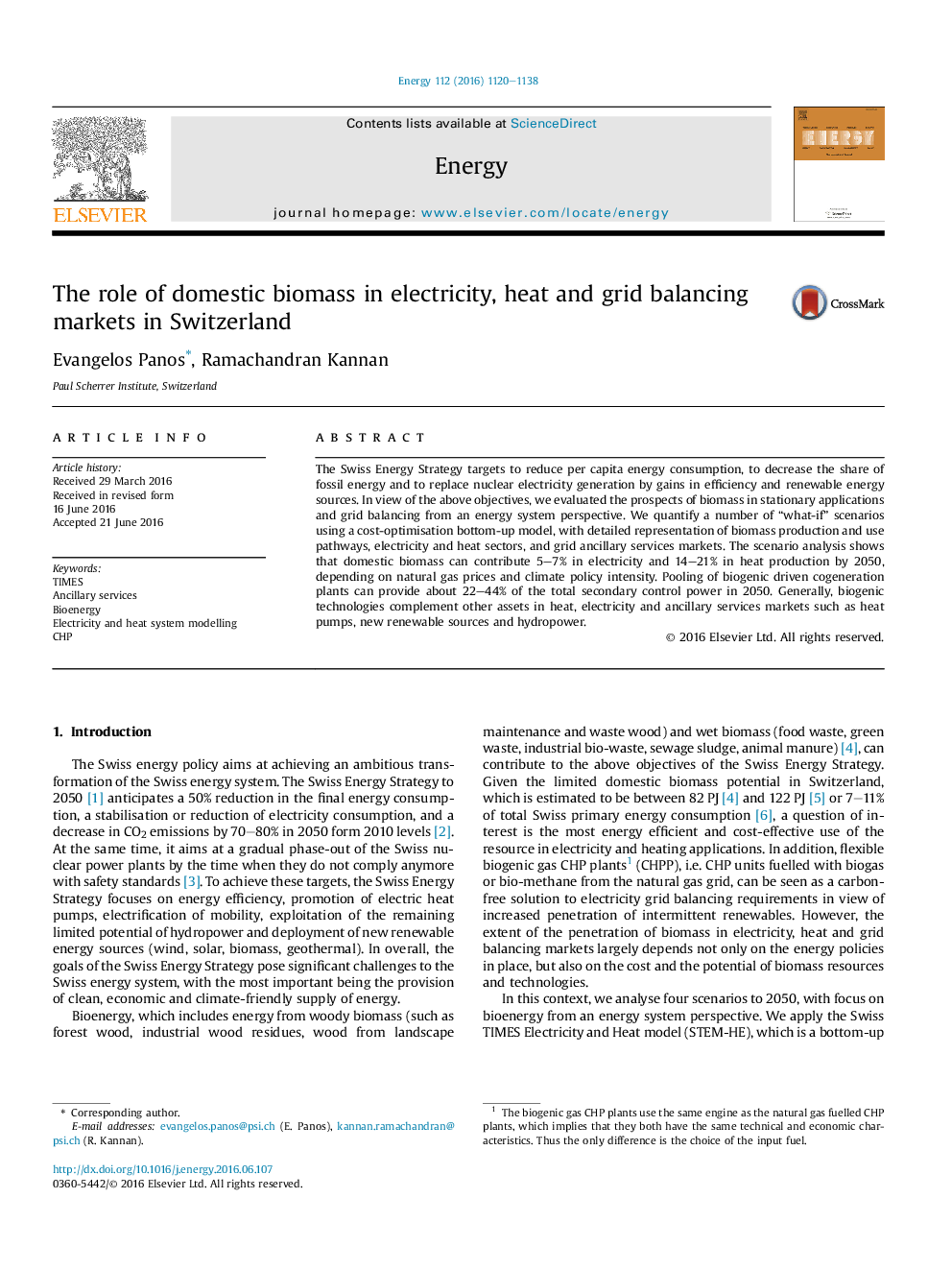| Article ID | Journal | Published Year | Pages | File Type |
|---|---|---|---|---|
| 8073165 | Energy | 2016 | 19 Pages |
Abstract
The Swiss Energy Strategy targets to reduce per capita energy consumption, to decrease the share of fossil energy and to replace nuclear electricity generation by gains in efficiency and renewable energy sources. In view of the above objectives, we evaluated the prospects of biomass in stationary applications and grid balancing from an energy system perspective. We quantify a number of “what-if” scenarios using a cost-optimisation bottom-up model, with detailed representation of biomass production and use pathways, electricity and heat sectors, and grid ancillary services markets. The scenario analysis shows that domestic biomass can contribute 5-7% in electricity and 14-21% in heat production by 2050, depending on natural gas prices and climate policy intensity. Pooling of biogenic driven cogeneration plants can provide about 22-44% of the total secondary control power in 2050. Generally, biogenic technologies complement other assets in heat, electricity and ancillary services markets such as heat pumps, new renewable sources and hydropower.
Keywords
Related Topics
Physical Sciences and Engineering
Energy
Energy (General)
Authors
Evangelos Panos, Ramachandran Kannan,
